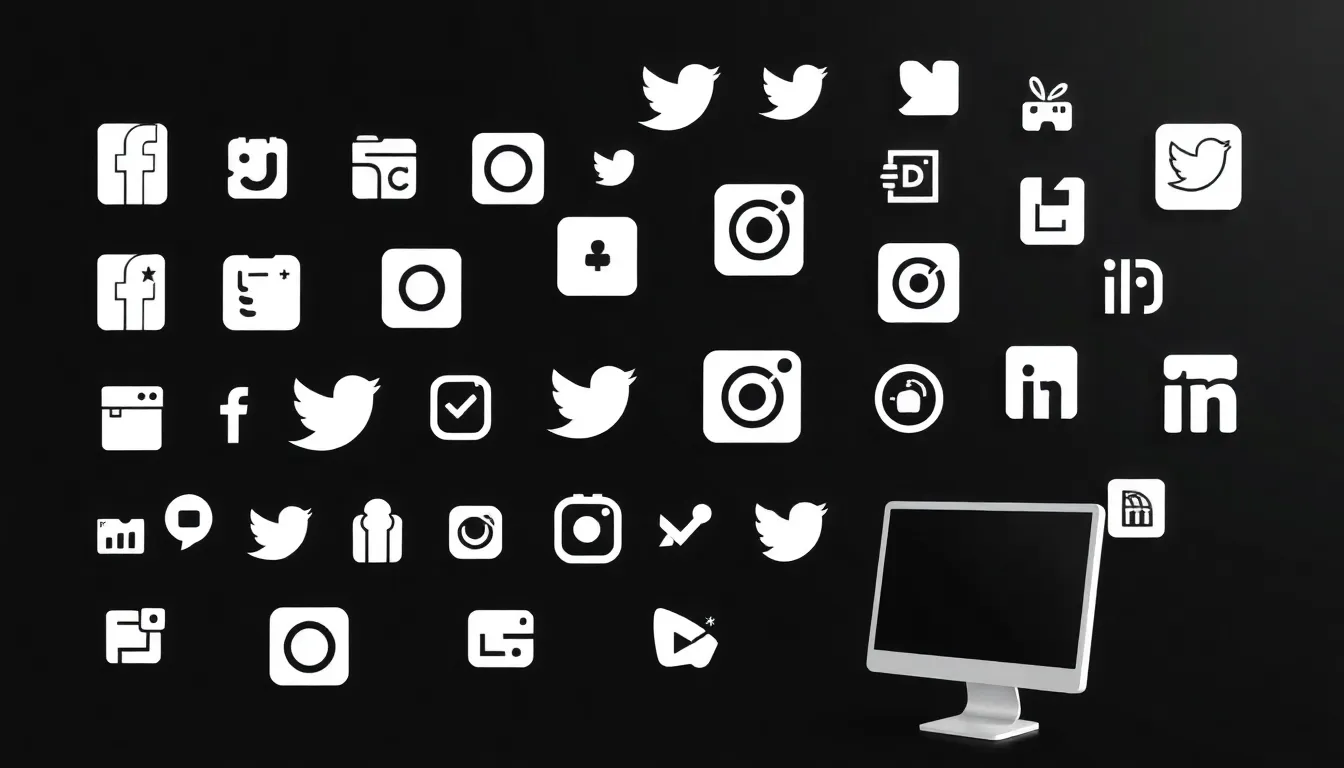In a world where social media reigns supreme, the aesthetics of your online presence can make or break your brand. Enter white social media icons—the unsung heroes of digital design. These sleek, minimalist icons not only elevate your website’s look but also whisper sweet nothings to your visitors about your taste and professionalism. Who knew something so simple could pack such a punch?
Table of Contents
ToggleUnderstanding White Social Media Icons
White social media icons serve a specific purpose in digital aesthetics. Minimalism is a trend, and these icons embody that style perfectly. Designers choose white icons to create a clean and modern look. The contrast between white icons and dark backgrounds enhances visibility and engagement.
Brand identity benefits from consistent iconography. When businesses use white icons across platforms, it reinforces their visual branding. Familiarity with these icons leads to stronger recognition among users. White social media icons maintain a professional and sophisticated appearance without overwhelming the design.
User experience plays a crucial role in the effectiveness of these icons. Well-designed white icons facilitate intuitive navigation. They invite users to interact with social media links easily. Clarity becomes paramount, as white icons reduce visual clutter in a busy online environment.
Moreover, versatility stands out as a key feature of white icons. They integrate seamlessly into various color schemes. Whether a website features vibrant colors or muted tones, white icons complement different backgrounds. This adaptability enhances their appeal to a wide range of brands.
The size and shape of white social media icons also contribute to their effectiveness. Icons that are too small may go unnoticed, while excessively large icons can distract from content. Striking a balance ensures they enhance rather than detract from the overall design.
White social media icons significantly impact online branding and user experience. They enhance aesthetic appeal and foster brand recognition, making them an essential component of effective web design.
Importance of Using White Social Media Icons

White social media icons play a significant role in online branding, enhancing both aesthetics and functionality. Their minimalist design resonates with contemporary users.
Visual Appeal
These icons create a sophisticated look on websites. Clean lines and a neutral color scheme keep the design modern and fresh. Whether placed on a dark background or within colorful layouts, their contrast enhances visibility. Users respond positively to visually appealing interfaces, leading to longer engagement times. Additional appeal stems from their ability to fit various design styles seamlessly. Using white icons evokes a sense of elegance and clarity, making it easier for visitors to focus on content without distraction.
Brand Consistency
Establishing a recognizable brand identity often relies on consistency across all platforms. White social media icons reinforce this identity through uniformity in design. Recognizable imagery fosters trust and familiarity among users. When brands utilize white icons, they signal a commitment to a streamlined aesthetic that transcends platforms. This consistent approach aids in brand recall, ensuring users can identify the brand quickly. In turn, strong recognition builds loyalty and encourages users to engage more with the brand’s content across channels.
Types of White Social Media Icons
White social media icons come in various designs, catering to different branding needs and styles.
Flat Design Icons
Flat design icons represent a minimalist approach focused on simplicity. They lack any three-dimensional effects, which allows them to blend seamlessly into diverse backgrounds. These icons often utilize a monochromatic style, maximizing the visual impact against dark or colorful settings. Flat icons emphasize clarity, enabling users to recognize social media platforms quickly. Their straightforward design aligns well with contemporary branding trends. Designers frequently prefer these icons for a chic and modern look. Various brands incorporate flat design icons for cohesive aesthetics across digital platforms.
3D Icons
3D icons offer a more dynamic, visually engaging alternative. These icons incorporate depth and shadowing, adding a layer of complexity to the design. A three-dimensional appearance helps them stand out on a page, making them eye-catching in web layouts. Users often find 3D icons more appealing due to their realistic portrayals. Brands may choose these to create a playful atmosphere while maintaining professionalism. The distinctive look of 3D icons attracts attention and encourages user interaction. Many designers balance modern elements with classic shapes in 3D icon design, ensuring versatility within various branding strategies.
Implementing White Social Media Icons
Integrating white social media icons effectively into web design elevates visual appeal. Designers must consider placement, ensuring icons are prominent yet not overpowering. White icons stand out against dark backgrounds, drawing user attention. Aligning icon size with branding helps maintain consistency across platforms. Responsive designs must accommodate different devices, ensuring accessibility for all users.
Web Design Integration
Seamless web design integration of white social media icons creates a balanced aesthetic. Placing icons in the header or footer enhances visibility, guiding user navigation. Designers often use grid systems, aligning these icons for a cohesive layout. Using white icons also supports branding, reinforcing the identity through simplicity. Emphasizing consistent spacing fosters a clean, unobtrusive look. Icons can also respond to hover effects, adding interactive elements that engage users further.
Social Media Marketing Strategies
Employing white social media icons in marketing strategies improves brand recognition. Utilizing these icons across marketing materials fosters a unified message, strengthening campaigns. Designers should consider audience preferences and platform usage when choosing icon styles. Consistent iconography enhances shareability, making content easy to identify and engage with. Using analytics to track interactions with these icons informs future adjustments. Inviting users to share or follow through visually appealing icons boosts overall social media presence.
White social media icons are more than just design elements; they’re vital tools for enhancing brand identity and user engagement. Their minimalist aesthetic not only elevates visual appeal but also streamlines navigation, making it easier for users to interact with content.
By maintaining consistency across platforms, brands can foster familiarity and trust among their audience. The versatility of these icons allows them to fit seamlessly into various designs, ensuring they resonate with diverse branding strategies.
Incorporating white social media icons into web design ultimately supports a modern and professional look, encouraging longer user engagement and reinforcing brand recognition. Embracing this trend can lead to a more effective online presence and improved marketing outcomes.





